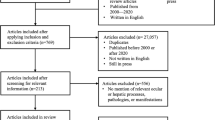Abstract
The pharmacokinetics of imirestat following topical ocular administration were evaluated in a series of studies in rabbits and dogs. Following single topical doses to both albino and pigmented rabbits, imirestat was subject to rapid uptake into the cornea followed by an initial rapid decline and then very slow elimination, with a t 1/2 of approximately 130 hr. Drug was rapidly absorbed into aqueous humor, with concentrations declining to nondetectable levels by 12 hr. Imirestat was retained in the lens following topical dosing similar to that in cornea, with an apparent elimination t 1/2 of 140 hr. Vitreous humor concentrations of drug were detectable for up to 72 hr after dosing. There was no apparent difference in the disposition of the drug between albino and pigmented rabbits. Bioavailability following topical dosing increased with dose, although not in a linear fashion. Formulation pH did not have an appreciable effect on ocular bioavailability. There was detectable systemic absorption following topical dosing, with plasma concentrations in rabbit being 50 to 75% of that observed following an equivalent intravenous dose. However, drug levels in the dosed eyes were significantly higher than in contralateral undosed eyes. Multiple dosing of imirestat for 6 weeks resulted in accumulation of drug in rabbit lens. Concentrations were higher in lens cortex than lens nucleus, with the time course for accumulation being different for the two. Our data suggest that imirestat penetrates into ocular tissue following topical dosing and is retained in lens and cornea, potential sites of action for the drug.
Similar content being viewed by others
REFERENCES
M. Averbuch, M. Weintraub, J. Liao, R. K. Brazzell, and R. E. Dobbs. J. Clin. Pharm. 28:757–761 (1988).
M. L. Chandler, J. Boltralik, B. York, and L. DeSantis. Invest. Ophthalmol. Vis. Sci. 22:1576 (1982).
O. Hockwin, A. Wegener, D. R. Sisk, B. Dohrmann, and M. Kruse. Lens Res. 2:321–335 (1984/1985).
P. J. McNamara, R. A. Blouin, and R. K. Brazzell. Pharm. Res. 5:319–321 (1988).
Y. H. Park, C. B. Wooldridge, J. Mattern, M. L. Stoltz, and R. K. Brazzell. J. Pharm. Sci. 77:110–115 (1988).
B. McCue, Y. H. Park, and R. K. Brazzell. Pharm. Res. 5:S29 (1988).
O. Hockwin, P. Müller, J. Krokzyk, B. A. McCue, and P. R. Mayer. Ophth. Res. 21:285–291 (1989).
L. A. Meyer, J. L. Ubels, and H. F. Edelhauser. Invest. Ophthalmol. Vis. Sci. 29:940–948 (1988).
M. Matsuda, T. Awata, Y. Ohashi, M. Inaba, M. Fukuda, and R. Manabe. Curr. Eye. Res. 6:391–397 (1987).
L. M. Cobo and D. L. Hatchell. Invest. Ophthalmol. Vis. Sci. 26:176 (1985).
R. K. Brazzell, P. R. Mayer, J. T. Slatterry, M. Weintraub, and B. A. McCue. Pharm. Res. 5:S182 (1988).
B. W. Griffin, L. G. McNatt, M. L. Chandler, and B.M. York. Metabolism 36:486–490 (1987).
Author information
Authors and Affiliations
Rights and permissions
About this article
Cite this article
Brazzell, R.K., Wooldridge, C.B., Hackett, R.B. et al. Pharmacokinetics of the Aldose Reductase Inhibitor Imirestat Following Topical Ocular Administration. Pharm Res 7, 192–198 (1990). https://doi.org/10.1023/A:1015893122054
Issue Date:
DOI: https://doi.org/10.1023/A:1015893122054




